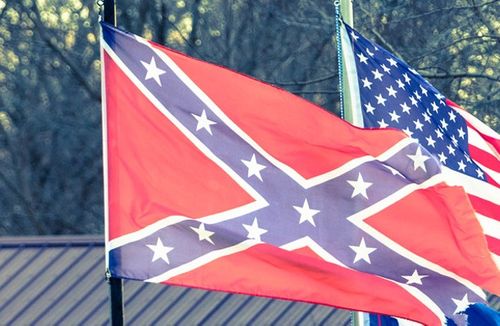The Surprising History of the Confederate Flag
Oct 17, 2022 · 2 mins read
0
Share
The American Civil War between the North (the Union Army) and the South (the Confederate Army) lasted from 1861-1865. The Confederate Army surrendered on April 9, 1865. Yet nearly 2 centuries after their defeat, their flag still flies in many places in the U.S... But why?
Save
Share
The first Confederate flag looked notably different from those that fly today. The Bonnie Blue Flag was first to represent the Confederacy, but it was soon replaced with versions closer to the Union's flag with stars and stripes.

Save
Share
Eventually the flags of the North and South looked so similar they were hard to distinguish on the battle field so the "Rebel Flag", which still flies today became popular. However, it was never adopted as an official military symbol. The Confederacy officially adopted 3 flags:
Save
Share

First flag: the "Stars and Bars" (1861–1863)

Second flag: the "Stainless Banner" (1863–1865)

Third flag: the "Blood-Stained Banner" (1865)
Save
Share
There were numerous variations and many Confederate soldiers made their own versions, but to the surprise of many, the "Rebel Flag" that still flies today was never an official Confederate Army flag. It lasted decades beyond the official flags due to later use.
Save
Share
After the war, the South tried to reconcile its loss and history. In 1894 Mississippi added the Rebel Flag to its state flag. In the early 1900's, groups like the United Daughters of the Confederacy began to organize to commemorate Confederate Army soldiers and rewrite history.
Save
Share
At this time, Confederate monuments sprang up across the South and the legend of "The War of Northern Aggression" was born. This concept lasted decades, and in 1948 the "Dixiecrats" or "States' Rights Democratic Party" formed. It was a racist, pro-segregation party in the South.
Save
Share
The Dixiecrats adopted the Confederate Rebel Flag as a party symbol which led to a huge resurgence of its popularity. It became widespread on shirts, TV, by bands and even flown on the battlefields in Korea. It also became directly tied to resisting civil rights and integration.
Save
Share
In 1956, Georgia adopted the Rebel Flag as part of its state flag amidst fighting desegregation. South Carolina and Alabama flew the flag over their state capitals as they too fought desegregation. Meanwhile, the Ku Klux Klan flew the Rebel Flag to intimidate black citizens.
Save
Share
Today, many insist it stands for Southern heritage and much of the post-war revisionist history of the South. However, the South's fighting for slavery in the Civil War and segregation in the 1960s, are why the flag exists and persists, making it widely seen as a symbol of racism
Save
Share
0
